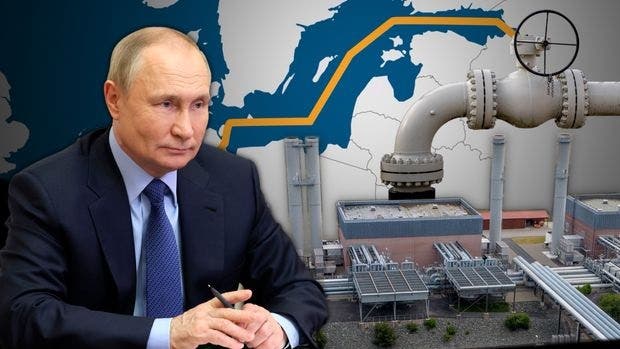The entire world is grappling with an unprecedented energy crisis the scale of which has not been seen since the 1970s when an oil embargo by OPEC countries set off fuel shortages and sky-high prices throughout much of the decade. This time around, the challenges we face are more complex since the current crisis is owed to a double-whammy of supply chain shortcomings from the pandemic and the war in Ukraine.

It is against this concerning backdrop that the International Energy Agency (IEA) released its annual World Energy Outlook. Usually, this massive report is rather stale, stuffed with hundreds of pages of technical content about how the world’s countries source their energy, along with projections of how things like renewable energy or fossil fuel use are supposed to change in the future.
But this year, the IEA report is anything but boring. Besides some interesting projections about how the energy crisis will evolve, the authors of the report claim that Russia’s best days as a super-sized gas station are behind it. Specifically, the authors seem convinced that Russia’s energy exports will never return to their profitable levels seen in 2021. Moreover, Russia’s oil and gas net revenue will likely drop by more than 50% from $75 billion in 2021 to less than $30 billion in 2030. Russia’s share of internationally traded energy is expected to fall from nearly 20% in 2021 to 13% in 2030, the IEA added.
This dire news for the future of Russia is perhaps vindication for those who watched in horror as Putin’s armies marched into Ukraine ransacking the country while it continued to enjoy record-high exports of energy despite massive sanctions from the collective West. According to an economy ministry document seen by Reuters, huge gas prices will boost Russia’s energy gross earnings to a staggering $337.5 billion in 2022, a 38% rise from 2021.

However, these short-term gains are destined to evaporate as Russia has become an international pariah for at least the foreseeable future. At the start of the war, the EU used to import nearly 40% of its natural gas from Russia, but now that figure has plummeted to only 9%, especially after the Nord Stream sabotage.
Putin’s plan was to force the hand of the EU through energy blackmail so as to pressure Kyiv to surrender. But this strategy seems to have backfired. In a strange turn of events, Norway is now the most important gas supplier for Europe. Liquefied natural gas from the U.S. and the Middle East rounds out most of the rest of the demand that is no longer served by Russia. Meanwhile, Russia has turned to other markets such as India and China to sell its stocks, but despite the fact that these nations are happy to buy energy at a significant discount, they don’t come anywhere near the 2021 demand of the EU. There is simply no room in China’s projected gas balance for another large-scale pipeline from Russia, the IEA concludes.
Moreover, the IEA mentions that the crisis is accelerating efforts to boost renewable energy and the energy efficiency of homes and heating. Coupled with sanctions, Russia is rupturing from the European energy market at a pace that was unimaginable prior to the war. And although coal use and CO2 emissions are rising as countries scramble to respond to energy shortages, these developments are only temporary. Clean energy investments are expected to rise to over $2 trillion by 2030 given current policies, much more than previously forecasted but still woefully short of the $4 trillion required to drive global emissions to net zero by 2050.
The IEA concludes that the war in Ukraine marks a “historic turning point towards a cleaner and more secure energy system,” adding that “many of the contours of this new world are not yet fully defined, but there is no going back to the way things were.” For instance, the IEA projects that global oil demand will peak around 2025, a full decade earlier than the organization previously predicted.
“The shocks in the 1970s were about oil, and the task facing policymakers was relatively clear (if not necessarily simple to implement): reduce dependence on oil, especially oil imports. By contrast, the energy crisis today has multiple dimensions: natural gas, but also oil, coal, electricity, food security and climate. Therefore, the solutions are similarly all-encompassing. Ultimately what is required is not just to diversify away from a single energy commodity, but to change the nature of the energy system itself, and to do so while maintaining the affordable, secure provision of energy services,” wrote the authors of the IEA report.
Although profoundly disruptive and dreadful, the war in Ukraine may have the undesired positive outcome of accelerating the deployment of clean energy much faster than previously anticipated. In effect, Putin might have already lost the energy war he’s started.






